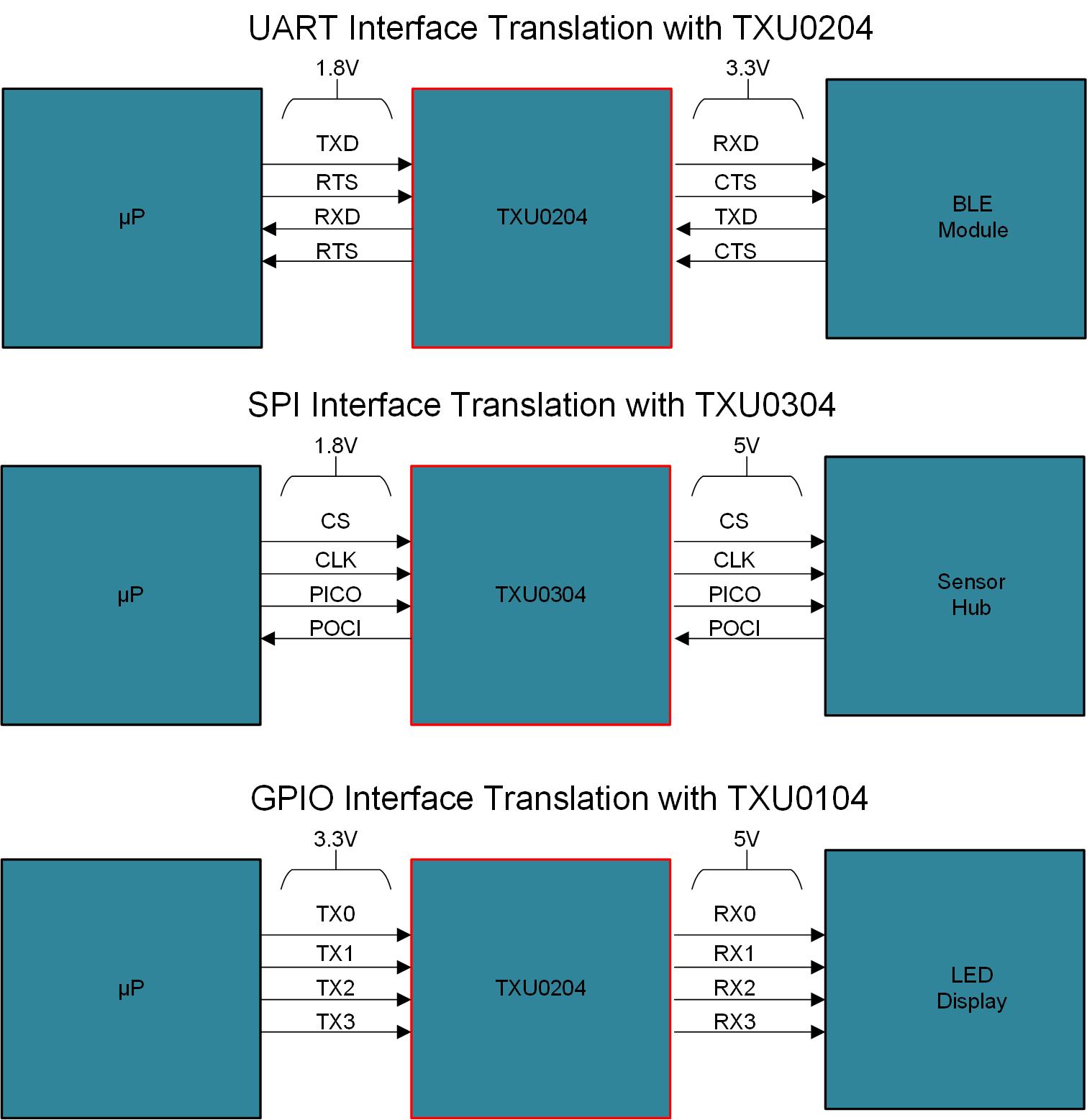SCEA105 April 2022 TXU0101 , TXU0102 , TXU0104 , TXU0104-Q1 , TXU0202 , TXU0204 , TXU0204-Q1 , TXU0304 , TXU0304-Q1
1 Application Brief
Brick and mortar businesses are evolving to compete with online retailing and home delivery services. As recent events have shown, people still want to get out of their homes and interact with the real world. Brick and mortar businesses have realized that their customer engagement model needs to change from being just a passive shopping or dining event to more of an experience. As businesses search for new experiential business models, they are turning to technology for help. One key technology solution that businesses are turning to is wireless beacons. Wireless beacon technology has been available for some time and is built on the Bluetooth™ Low Energy standard.
Beacons have evolved over the past few years as the market has identified multiple use cases for the technology. One of the most promising use cases for beacons is how they can be used as a platform to broadcast messages to nearby smartphones and other computing devices in retail and dining settings. In essence, beacons are digital buoys that can be used to send messages to digital devices like smart phones that are passing by, to guide or provide information to the devices within the beacon’s range. In the era of low touch and no touch interactions, beacons can be a critical tool for communicating with retail customers. Beacons are optimal for this type of use case as they are relatively small, power efficient, low cost, and easy to use devices that can be implemented at scale without the need for complicated infrastructure. As retail and dining markets start to adopt beacon technology, to add an experiential component to their business models, low cost beacons will be a key enabler for adoption to reach critical mass.
Beacon designers are faced with key challenges of ensuring that their designs are low cost as well as power efficient. Component selection becomes a key task for system designers as they try to balance optimal performance and system cost. One of the main hurdles of component selection is selecting devices that will interoperate with one another while still being power efficient.
Often, the optimal device for one function can operate on a different voltage range than the optimal component for another function. Additionally, low power modes for many components will drive I/O voltage below 1.8 V, in some cases, which can present a challenge to designers.
How can a design engineer bring together the core components of beacon designs and still take advantage of their low power capabilities? The simple answer is to use low power and efficient fixed direction level shifter devices like TI’s new TXU0x04, TXU0x02, and TXU0101 family of 4 bit, 2bit, and 1 bit translators that, not only supports low power operation, but also supports shifting I/O levels down to 1.1 V (1.1 V to 5.5 V). Low voltage fixed direction level translators enable design engineers to implement low power level shifting between core components for interfaces such as SPI, UART, GPIO and virtually any other multi-bit interface as well as the low voltage I/O levels associated with low power modes of these devices. See Figure 1-1 below for UART and other standard interface examples. The ability to support voltage levels below common voltage rails such as 1.8 V enables beacon applications to enter battery savings modes that can limit I/O levels to sub 1.8 V. Fixed direction translators enable low power operation compared to bi-directional solutions. Fixed direction implementations simplify designs by eliminating some of the implementation complexities, such as bus contention, of auto-directional devices that employ one-shot based architectures.
Fixed direction devices are usually available in multiple channel direction configurations such as three transmit and one receive (TXU0304) that are commonly needed for standards such as SPI or two channels in each direction (TXU0204) for level shifting interfaces such as UARTs as well as a configuration with all channels in the same direction (TXU0104). In addition, the lower pin count nature of fixed direction devices makes them suitable for very small QFN packages like the new BQA package from TI that is conducive to board space limited designs common for wireless beacons.
Fixed direction level shifter solutions can help designers bring their beacon designs together in the most efficient and robust manner possible.
For more information on the TXU0x04, TXU0x02, and TXU0101 fixed direction translation devices, please visit the Texas Instrument’s Voltage Translation and Level Shifters website.
 Figure 1-1 Standard Interface
Implementations with TXU0x04
Figure 1-1 Standard Interface
Implementations with TXU0x04